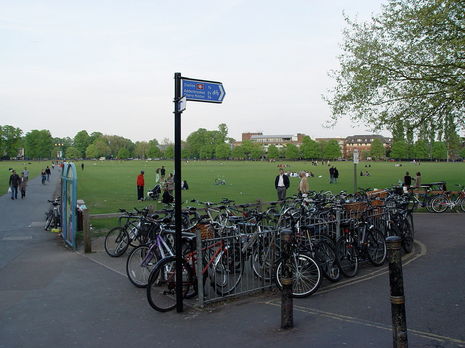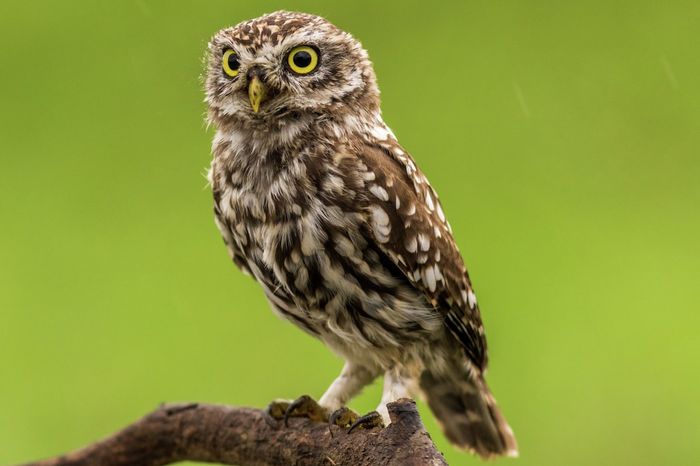The evolution of urban greening
Urban green spaces can create more problems than they solve, argues Tungsten Tang

Urban green space is one of those things: you don’t always realise how much you have. In Cambridge, parks are integrated into the urban landscape as part of my daily commute, as meeting points for friends, and as an extension of streets. Yet strangely, while the benefits of urban green space have long been well-established, it is glaringly lacking in many places.
I grew up in a satellite town in Hong Kong — my neighbourhood is planned with the intended provision of open space. Yet our satellite town is in no way as idealised as the “slumless, smokeless” garden cities envisioned by 19th-century urban planner Ebenezer Howard.
Even Howard missed the point — his ideas about gardens were based on notions of private property and charged with exclusivity. He keeps the ideal city clean by geographically marginalising "negative production externalities" such as factory pollution and unwanted populations. Gardens are public spaces for only a subset of the public.
While my hometown has no suburban homes for “waifs, convalescent, inebriates and insane asylums” as Howard planned, its parks are filled with concrete and designed with purpose: they contain tennis and basketball courts, open-air theatres, artificial waterfalls, and concrete plazas. Although designated as open spaces, the lack of inclusiveness results in a corresponding lack of incentive on the part of the urban residents to utilise these spaces.
What does it mean to be public? Does public access entail equal access to these spaces? This is often not the case. Black and minority ethnic (BME) populations, for example, are reported to be twice as likely to be situated in Britain’s most green-deprived neighbourhoods; households with income under £15,000 are 26% more likely to be further than a 5-minute walk away from green spaces than those with income over £35,000.
I further suggest that when we discuss the public in the context of urban green spaces, we consider how the 'public' not only includes the human population, but also all the assets engrained in a community that cannot be owned privately: those intangible, like community history and indigenous culture, and those tangible, such as soil quality, feral populations, and overall biodiversity.
At what cost, though, does urban greening come? In Hohhot, a city situated on the steppes of Inner Mongolia, droughts in its dryland climate are amplified by extensive mining, climate change, and consequentially, desertification. A greening project, starting in 2013, involved almost exclusively spruces (P. asperata) — 1 million of them.
As of 2020, all that remained of the project was a series of ditches where roots had once dwelled, with dead, yellowed trees waiting to be chopped. Aside from the climatic incompatibility of spruces, many of them were planted in cubic-metre pots despite heights of 3-4 metres, or rooted in gravel and construction waste right below topsoil. The utter failure and lack of any viability study cost 3 billion CNY (0.33 billion GBP), of which the municipal authorities owe 2.5 billion to their contractors.
Another case, also in China, is more subtle. High-quality dirt is in increasing demand for use in urban greening. Phaeozem, characterised by high humus content and low lime content, is a dark, arable soil found exclusively in the Northeastern provinces in China, where it is used preferentially for growing staple crops — rice, wheat and soybeans.
Under the promise of “land revitalisation”, farmers put their land on lease only to find tractors scooping out lorries and lorries of dirt
Yet the arability of Phaeozem owes to centuries of nature’s work — humus is formed from decomposition of organic matter, with a turnover every 100 to 1000 years. In one recent case, under the promise of “land revitalisation”, farmers put their land on lease only to find tractors scooping out lorries and lorries of dirt. The environmental cost of urban greening is transferred to rural areas. Cambridge economist Partha Dasgupta writes in his briefing on the Dasgupta Review: "It’s an elitist view of development… [urban citizens] don't pay for [natural capital], because they're protected in the urban areas and they trade their way through life and have a high income."
Moreover, our cities have been designed to favour some species, creating our own peculiar parody of wild flora and fauna. As one study points out, “in many cases plant origin doesn’t matter as much as the resources provided by the plant”. Much of urban fauna are generalists adaptable to many environments. Pigeons, for example, are a staple of cities. Derived from rock doves, their natural habitats include sea cliffs and rock ledges, comparable to concrete walls. Biodiversity-wise, however, they are often invasive and pose threats to the pre-existing indigenous specialist species (remember, for instance, that koalas survive exclusively on eucalyptus leaves).
We must step back and consider ourselves, and human civilisation, as a long term lessee of land
Rather than thinking about land, spaces, and even biodiversity as commodities to be rented and traded, we must step back and consider ourselves, and human civilisation, as a long term lessee of land. We are in a contract with nature wherein our personal and community wellbeing is at stake.
Urban modifications are irreversible – we must stop viewing ecological conservation as an external counterbalance to human civilisation. As versed delicately by a 1997 paper on Urban Ecosystems: “Humans are the creators of cities and therefore the keystone species in the urban system”. Hence, while degrowth may be imperative to conservation, tied with it hand-in-hand is rewilding.
Microscale de-extinction of species has been trialled in the last few decades, with incremental success since the Pyrenean Ibex in 2003; modern plans involve passenger pigeons. Yet these efforts are highly energy consuming, and pose a patronising and objectifying attitude towards “exotic” living organisms as ornaments of biodiversity.
Instead, we must sign new contracts with nature in light of our urban manipulations. For centuries, our consensus on urban planning and civil engineering has focused on conquering nature. Now, we do not need more exclusive gardens, nor more green patches at the cost of environmental degradation — we need to integrate urban landscapes into the continuum of ecosystems by rewilding. Only then will urban systems be truly democratic to their public constituents: both human and non-human residents.
 News / Uni Scout and Guide Club affirms trans inclusion 12 December 2025
News / Uni Scout and Guide Club affirms trans inclusion 12 December 2025 News / Cambridge study finds students learn better with notes than AI13 December 2025
News / Cambridge study finds students learn better with notes than AI13 December 2025 News / Cambridge Vet School gets lifeline year to stay accredited28 November 2025
News / Cambridge Vet School gets lifeline year to stay accredited28 November 2025 Science / Did your ex trip on King’s Parade? The science behind the ‘ick’12 December 2025
Science / Did your ex trip on King’s Parade? The science behind the ‘ick’12 December 2025 News / Pembroke to convert listed office building into accom9 December 2025
News / Pembroke to convert listed office building into accom9 December 2025









